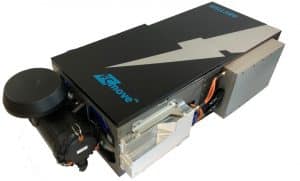Recent high volumes of trading saw Ballard Power stock shoot past USD 21 at one point. Subsequent profit-taking then caused the price to fall again. I would say this kind of correction is not unusual during an upward trend and gives investors another opportunity to (re)purchase shares.
I expect investment banks to set price targets above USD 25 should Ballard provide them with good enough reasons and good news.
Analysts raise expectations
Some analysts have already begun to increase their targets. Not long ago, financial service firm Raymond James said that it sees the price rising to USD 28. Previously, Bernstein changed its target to USD 22. Plus, the National Bank of Canada put the stock on Buy. Still, there are some crucial questions that have yet to be answered. How well will the new stack factory in China do? What will be the profit margin? How much revenue can we expect? The company wants to provide some clarity on these issues at its Investors Day on Sept. 29. I think the event will be a success. I also believe the stock will attract the attention of many more analysts working for large investment banks. Few of them are watching the fuel cell market these days. That will change as soon as Ballard [Nasdaq: BLDP] partners up with another big OEM. Clearly, China provides the manufacturer with the perfect environment for growth. And a country that huge and populous could likewise serve as a springboard for expanding business globally. Reportedly, the Chinese government will announce the budget for its fuel cell and hydrogen program as early as the third quarter. I expect USD 100 billion at minimum, but we could be talking about as much as USD 500 billion over five to 10 years.
While China is Ballard‘s largest market for commercial vehicle stacks, a market which partner and shareholder Weichai can serve with ease, the Canadian fuel cell supplier is not relying on one country alone. It generates 40 percent of its revenue in the People’s Republic, another around 40 in Europe and 20 percent in North America, which means it can get through turbulent times pretty much unscathed. I think the company could additionally begin production in Europe, ideally in a partnership resembling Bosch and PowerCell’s (where Bosch holds stock and manufactures fuel cells under license).
…
read more in H2-international October 2020
Risk warning
Share trading can result in a total loss of your investment. Consider spreading the risk as a sensible precaution. The fuel cell companies mentioned in this article are small- and mid-cap businesses, which means their stocks may experience high volatility. The information in this article is based on publicly available sources, and the views and opinions expressed herein are those of the author only. They are not to be taken as a suggestion of what stocks to buy or sell and come without any explicit or implicit guarantee or warranty. The author focuses on mid-term and long-term prospects, not short-term gains, and may own shares in the company or the companies being analyzed.
Author: Sven Jösting

























0 Comments